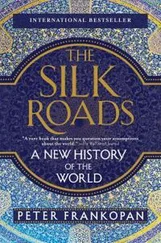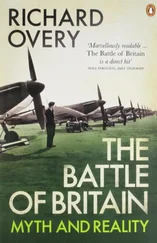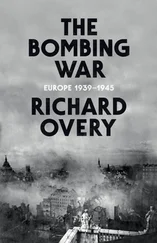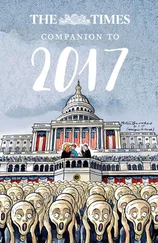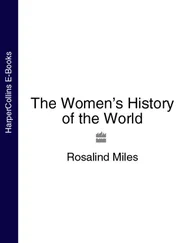Only the onset of serious research on how the body worked—perhaps the most famous example was William Harvey’s discovery of the circulation of the blood, published in 1628—made it possible to understand how the body was affected by particular conditions and to suggest prophylaxis. Even then the growing understanding of the body did little to help prevent epidemics until the onset of vaccination (introduced in late-18th-century Britain for smallpox) and the path-breaking research of the French chemist, Louis Pasteur, and the German doctor Robert Koch, which by the 1880s had confirmed that disease was caused by bacteria, each different micro-organism responsible for a particular disease. The discovery of antibiotic properties in penicillin mould in 1928 completed the therapeutic revolution. From the mid-19th century onwards the older medical traditions, which had limited or no medical efficacy, were superseded by a science-based medicine which has pushed the frontiers of biochemistry, neurology, physiology and pharmacology almost to their limits and has, at least temporarily, conquered almost all known diseases and a large number of internal medical disorders.
Only the identification of the HIV virus in the 1980s, which attacks the body’s immune system, made it clear that even the most scientifically advanced medicine may not in the future be able to stem new and unexpected forms of epidemic. For the fortunate few generations in the West who have been the full beneficiaries of the medical revolution, the transformation has been extraordinary. For all the rest of recorded human history there was no effective cure for most diseases and humans survived only because of a complex struggle between the micro-organisms and the human immune system. Death was ever-present and social attitudes and religious beliefs had to be rooted in the expectation of high levels of mortality. For those who survived there were disfiguring illnesses, crippling medical conditions, poor eyesight, chronic toothache, and so on. For women throughout history there was the debilitating cycle of births and the ever-present risk of maternal death. Pain, like premature death, was a permanent visitor.
To make matters worse, throughout human history both death and pain have been inflicted unnaturally, the product of deliberate violence on the part of human communities. Man, and almost always the male of the species, is a uniquely aggressive and punitive creature. Although attempts have been made over the past century to demonstrate that other animal species indulge in deliberate violence, animal violence is instinctive, not conscious. Mankind, on the other hand, has throughout recorded history, and evidently long before that, been able to premeditate the use of violence directed at other humans. Some anthropologists, following the 18th-century French philosopher Jean-Jacques Rousseau, have tried to argue that early man was most likely peaceable, and that only the tensions generated by more complex forms of social life introduced higher levels of violence. But the range and sophistication of pre-historic weapons, first stone, then iron and bronze, makes the idea of a pacific prehistoric state implausible. It is of course true that with settled communities, centred on cities, violence came to be organized through the use of armies. The evolution of a specialized human function for organising and legitimating the use of violence is evident in the very earliest recorded history. The soldier, armed with an ever more lethal armoury, runs in an unbroken line from all corners of the ancient world where complex civilizations arose. In tribal communities, without settled urban life, inter-tribal and intra-tribal violence was often ritualized, the young males of the tribe using violence as a rite of passage or a sacred obligation.
There is no single answer to the question of why violence should be such a hallmark of world history, but it can be found on almost every page. The German legal theorist Carl Schmitt, writing in the 1920s, claimed that the human community has always been divided between ‘friend’ and ‘foe’, those who are included in the group and those who are excluded. Simplistic though the distinction might seem, the concept of the alien, the other, the barbarian, the enemy, or the excluded also runs as a thread through all history. Treatment of the ‘other’ has always been harsh, even in the modern age with its vain efforts to impose some kind of restraints or norms on military behaviour and state violence. Yet even this distinction leaves a great deal unexplained. Human beings do not just fight each other in pitched battles using soldiers who know what to expect. They punish human victims in hideously painful and savage ways. Coercive social relationships have been far more common than consensual ones. Victims, even those from among ‘the included’ who are guilty of crime, have been tortured, executed, beaten, imprisoned in ways so ingeniously atrocious and gratuitously cruel that it is difficult not to assume that violence is the normal human condition and the very recent and limited experience of peace and respect for the individual a merciful historical anomaly. Violence is also universal, not some characteristic of ‘savage society’ as self-righteous Victorian imperialists like to think. Civilizations, however sophisticated, have indulged in violence of every kind. Religions have often led the way in devising grotesque ways to seek out heresies and exorcize devils. At the Museum of Torture Instruments in Guadalest in Spain (by no means the only such museum) are displayed roomfuls of fearful devices designed to extract confessions from across early-modern Europe, including the unhappy victims of the notorious Spanish Inquisition—iron crowns with spikes which tighten around the victim’s head, sharp stakes that could impale the whole length of a human body without killing the victim immediately. Human beings have devoted a deplorable amount of effort to inflicting suffering, and seem to have done so with few moral qualms.
There have been many attempts to explain why wars happen, or why human history is so soaked in blood. There is no single concept of war (though there is ‘warfare’, the art of fighting) that can embrace all the many forms of war or the thousands of separate historical reasons why particular wars break out, evident from the pages that follow. Early-20th-century anthropologists were inclined to argue that war might have had some important function in primitive societies or in the age of early state formation but they could see no justification for it in the modern age. The idea that war, and other forms of violence, were a throwback to a past age now thinly papered over with ‘civilization’ was urged by the Austrian psychoanalyst Sigmund Freud when he reflected on the reasons for the prolonged and deadly fighting in the First World War: ‘the primitive, savage and evil impulses of mankind have not vanished in any individual, but continue their existence, although in a repressed state’. Freud thought war rapidly exposed the savage persona inside and later argued that the more ‘civilized’ a people became, the more likely it was that the dam of repression would burst and uncontrollable violence result.
Whether this really is the mechanism that releases violence, Freud proved all too right in his prediction. In the late 19th century it was still just possible to imagine that the barbarities of earlier history, when cities were sacked, their populations put to the sword, fine buildings burned, was a thing of the past (though this did not prevent European troops on a punitive expedition from destroying the stunning Summer Palace in Beijing in 1860, an act of wanton vandalism that witnesses compared with the sack of Rome by the Goths). But the 20th century has been the bloodiest in all of human history, witness to somewhere between 85 and 100 million violent deaths, and millions more wounded, maimed, tortured, raped and dispossessed. It includes the deliberate murder of the European Jews which must rank with anything else in scale and horror from the past 6,000 years. It will be difficult for historians in a few hundred years’ time to see what separates the Mongol sack of Samarkand in 1220, which left only a few of the inhabitants alive, from the Allies’ destruction of Hamburg in 1943, which burnt the city to the ground and killed 40,000 people in hideous ways in just two days. The second was, of course, quicker and more efficient, but the moral defence usually mounted, that war is war, is a maxim as comprehensible in the ancient world as it would have been to Genghis Khan or Napoleon. So-called civilization displays precisely Freud’s divided self—capable of self-restraint and social progress, but capable of sudden lapses into barbarism.
Читать дальше

